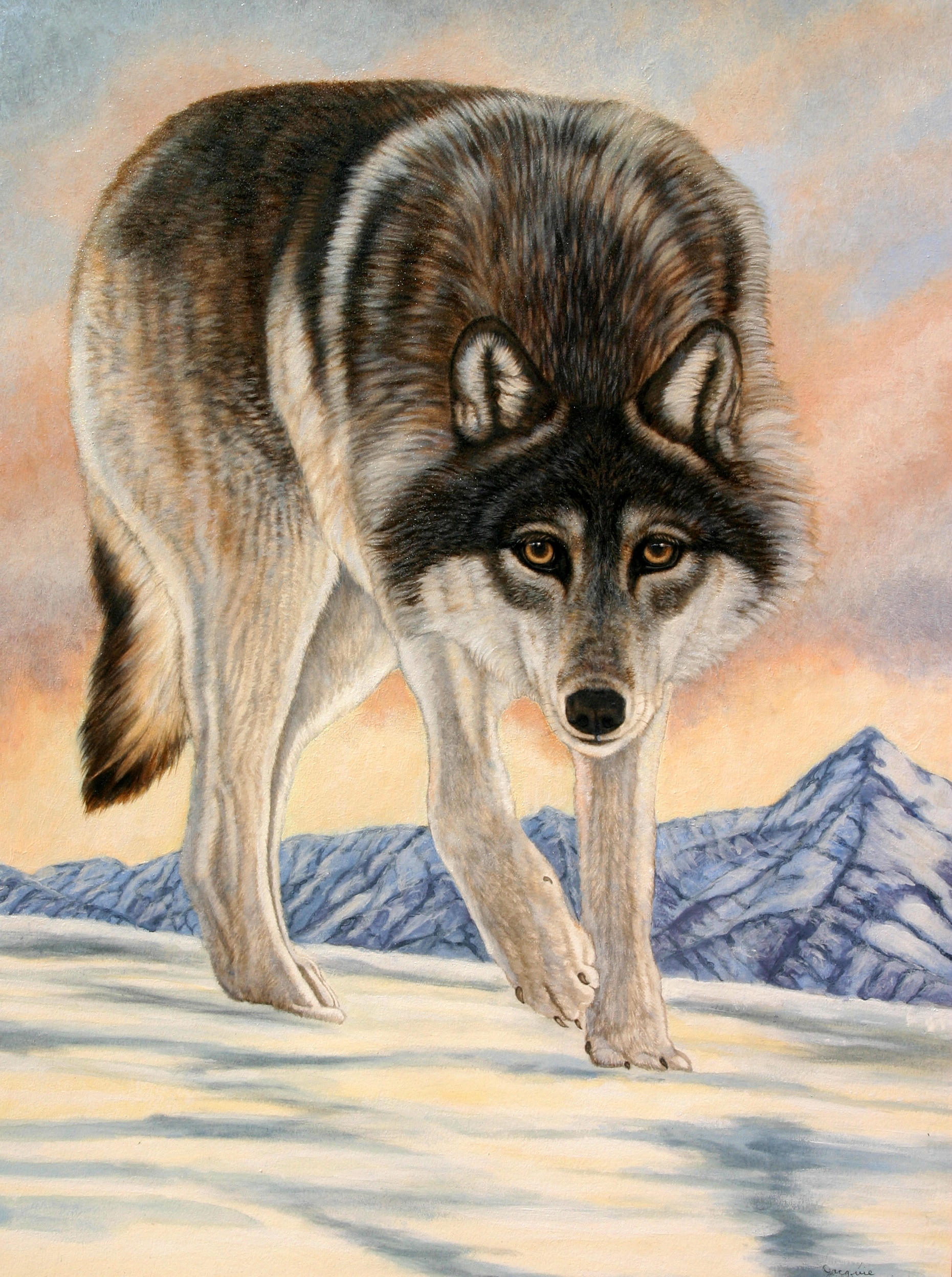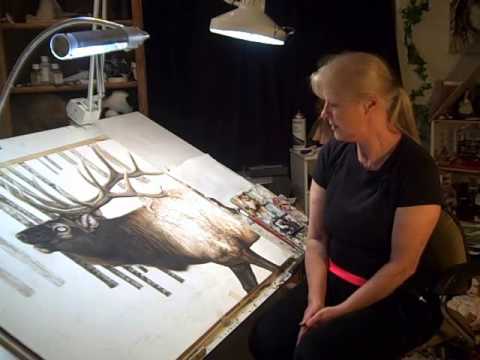Why Gray Wolves Matter-Part 1-Animal Art

The Gray Wolf is also known as the timber wolf, western wolf, or just plain wolf, is a canine found in the wilderness and remote areas of Eurasia and North America. It is the largest member of its family, with males averaging 95–100 lbs.; and females 79–85 lbs. Its winter fur is long and bushy and predominantly a mottled gray in color, although many other variations, including nearly pure white, red, and brown to black also occur.

The Gray Wolf is a social animal, traveling in small families consisting of a mated pair, accompanied by the pair’s adult offspring. It is a top-tier predator throughout its range; only humans and tigers posing a serious threat to it. It feeds primarily on large hoofed animals, though it also eats smaller animals, livestock, carrion, and even garbage.
The gray wolf is one of the world’s best-known animals, with more books written about it than any other variety of wildlife species. It has a long history of association with humans, having been despised and hunted in most rural communities because of its attacks on livestock, while conversely being respected in other societies. Although the fear of wolves is present in many human societies, the majority of recorded attacks on people have been attributed to animals suffering from rabies. Non-rabid wolves have attacked and killed people, but mainly children. Healthy wolves rarely attack humans; they have developed a fear of humans from encounters with hunters and shepherds.
On average, adult wolves measure 40–63 inches in length and 30–33 inches in shoulder height. Their weight averages 79 lbs, but varies from 26 lbs to176 lbs. Females in any given wolf population typically weigh 5–10 lb. less than males.
They usually travel at a loping pace, placing their paws one directly in the line of travel. This gait can be maintained for hours at a rate of 5.0–5.5 mph, allowing the wolf to cover great distances. On a path, a wolf can quickly achieve speeds of 30–37 mph. The gray wolf has a running gait of 55–70 km/h (34–43 mph), can leap up to16 ft. in a single bound, and can maintain this rapid pace for at least 20 minutes.
The gray wolf has very dense and fluffy winter fur, with short under-fur. Wolf fur provides better insulation than dog fur does, since it does not collect ice from warm breath. Coat color varies from almost pure white through various shades of blond, tan, and rust to grays, browns, and blacks. Black-colored wolves in North America inherited the gene responsible for black fur from past interbreeding with domestic dogs. Black specimens are more common in North America than in Eurasia; about half the wolves in Yellowstone National Park are black.
The gray wolf is a social animal; the basic social unit consists of a mated pair, accompanied by the pair’s adult offspring. The average pack consists of a family of 5–10 animals, or sometimes two or three such families, but exceptionally large packs consisting of up to 42 wolves have been described. . With ideal conditions, the pair produces pups every year, with such offspring typically staying in the pack for 10–53 months before leaving. Reasons for dispersal include the onset of sexual maturity and limitations within the pack for food. A new pack is usually founded by an unrelated leaving male and female, traveling together in search of an area with no other hostile packs. Wolf packs rarely adopt other wolves into their fold, and typically kill them. During times of food abundance, such as migration, or calving, wolf packs may temporarily join forces.
Continued tomorrow Part 2….
To see more of my wolf Paintings CLICK HERE


